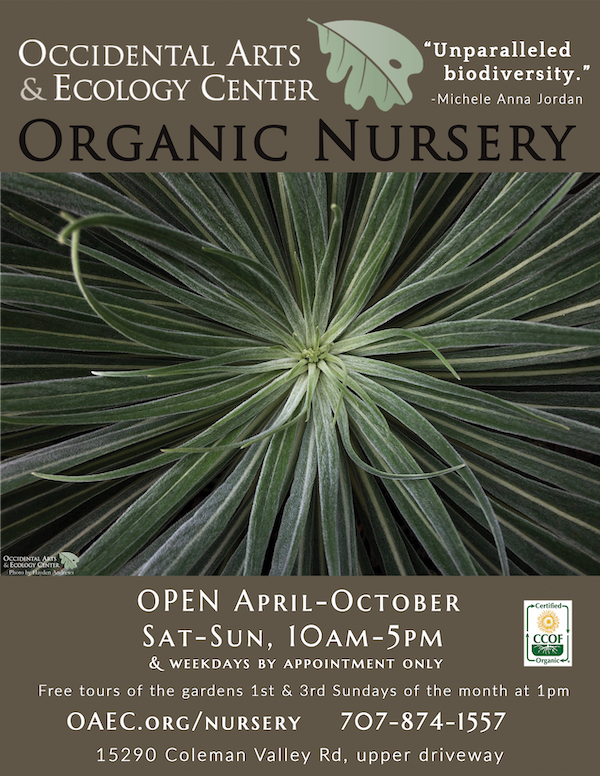
As the days are becoming noticeably shorter, the afternoon shadows have become longer and deeper and the quality of light has changed to that gentle golden autumn glow. We think of this time of year as the harvest time, but in fact, in our bioregion, fall is also an important time to plant. Earlier this month, Mother Garden Biodiversity Program Director Doug Gosling was interviewed on Michelle Anna Jordan’s podcast Mouthful.
To ensure a winter garden full of food, now is the time to put annual plants in the ground so that they have time to size up before the cold sets in. In the Nursery, we have sown all of our annual cool season crops, so in the coming weeks, we will have kales and collards, sprouting broccoli, chard, salad greens and lettuces, radicchios and endives, edible flowers like calendula and borage, and herbs like chervil and cilantro.
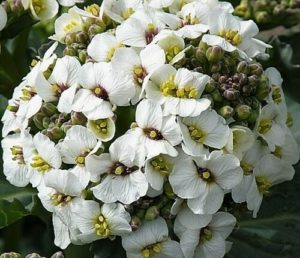 Sea Kale
Sea Kale
We are excited to again offer up a new round of the hard-to-find perennial vegetable, Sea Kale (Crambe maritima), now being the perfect time to put this cool loving Brassica into your garden or landscape. The emerging shoots can be blanched by mounding up mulch around them or growing them under tents to create the white color and an especially delicate flavor and texture. Even if you don’t want to go to the trouble of blanching your Sea kale to serve with a creamy bechamel, its silvery-white leaves make a succulent sauté. The immature single-seeded translucent green fruit tastes like a crunchy pea-shaped radish, fun as a whimsical garnish or fresh garden nibble.
Sea Kale is a striking edible ornamental with its Spring profusion of white flowers (unusual for a Brassica) that attract pollinators, pictured here.
Recipe: Light Chervil Pistou
One of our all-time favorite fall and winter annual herbs, chervil, is not so well known in this country (it does not dry well) but is cherished in France as one of the ingredients of bouquet garni. This fragile plant with its lacy leaves is surprisingly tolerant of repeated frosts, and in fact, the colder the weather, the sweeter its taste. Its subtle anise-flavored leaves are perfect as a delicate garnish, but our favorite use of chervil is in a winter pesto or drizzle.
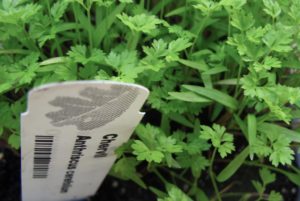 1 bunch chervil (or half chervil, half parsley)
1 bunch chervil (or half chervil, half parsley)
Juice of 1/2 lemon
1 very small clove garlic, crushed (optional)
1⁄4 cup olive oil
Salt to taste
Blend herbs with lemon juice in a high powered blender (or use an immersion wand inside a mason jar). Add a little more lemon juice to get the blades moving, if needed. Blending in the acid first prevents the greens from turning brown later. Add salt, crushed garlic and the oil all at once and pulse briefly until just smooth.
Serve with steamed vegetables, fish or as a swirled garnish for a blended soup. From the “swirl” recipe page 108 of the Occidental Arts & Ecology Center Cookbook.
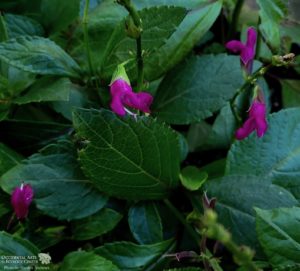 Sage Before Beauty
Sage Before Beauty
Chiapas Sage, Salvia chiapensis, is a hummingbird plant native to Mexico that blooms plentiful, tiny fuchsia-pink flowers from late summer to winter. Its leaves are glossy and thick, making it hearty and perfect for the edges or corners of your garden. Chiapas sage usually grows to 2 feet tall, but can reach 4 feet tall and 4 feet wide at its happiest: in light shade and well-drained soil. Drought, shade and somewhat frost tolerant!
Love sages? We have one of the largest collections of sages for sale in any nursery in Northern California!
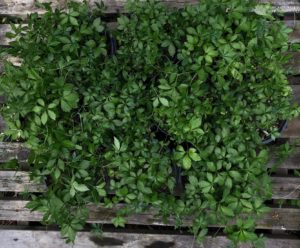 Medicinal Mojo
Medicinal Mojo
Jiaogulan, an herbaceous perennial vine originating in mountainous regions of East Asia is best known as the Immortality Herb. It’s believed to promote eternal life – some of the oldest people on Earth live in the Guizhou Province of China and consume Jiaogulan regularly. It’s also reported to be an aphrodisiac. The raw leaf adds a zesty kick to raw salads but is most commonly used as a tea herb.
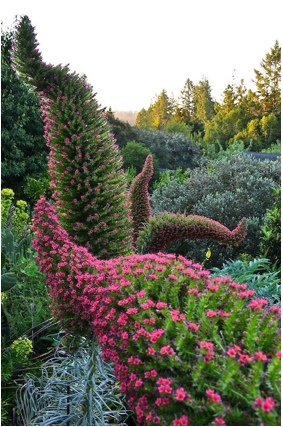 Tower of Jewels
Tower of Jewels
Now is also a great time to plant biennials such as mulleins and the star of our nursery, the aptly named Tower of Jewels Echium wildpretii – pictured right in its second year flower form and in the top image in its first year rosette form. A relative of the Pride of Madeira which you’ve seen up and down the coast of Sonoma County, but hailing from the Canary Islands, Tower of Jewels is distinctive in that it has a single up to 12 feet tall spike with endless spirals of thousands of bright pink flowers that attract pollinators like no other! We can say that no plant that we put in our landscapes and gardens stops people in their tracks like this Dr. Seuss-like wonder!
Join us at the Bioneers Conference Seed Exchange!
The Bioneers Seed Exchange is Saturday October 19th from 6:30-8pm, co-hosted by OAEC, Tesuque Pueblo Tribal Farm, Richmond Grows Seed Lending Library and others, where we’ll share many of our favorite crops from the Mother Garden Biodiversity collection!
Get occasional OAEC Nursery updates with seasonal gardening tips, new offerings, tantalizing variety descriptions, and upcoming events delivered to your inbox.
